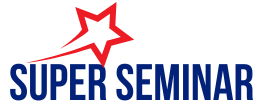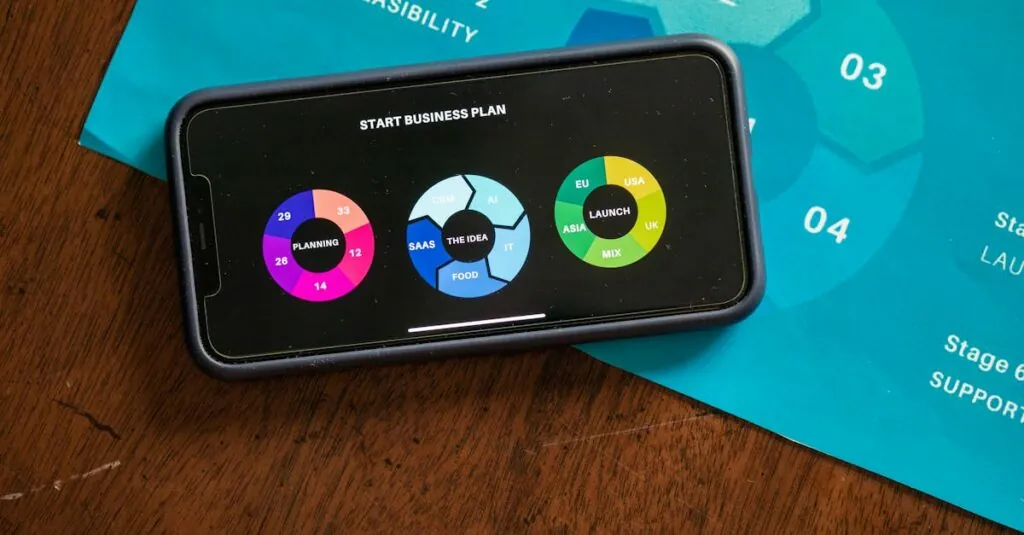In the fast-paced world of software as a service (SaaS), standing out is tougher than finding a needle in a haystack. With countless competitors vying for attention, effective marketing strategies can make or break a business. It’s not just about having a great product; it’s about getting that product into the hands of eager customers who can’t wait to click “subscribe.”
Table of Contents
ToggleOverview of SaaS Marketing Strategies
Successful SaaS marketing strategies prioritize customer acquisition, retention, and engagement. Effective use of digital marketing channels, such as content marketing, social media, and email campaigns, enhances visibility. Creating valuable content establishes authority and attracts potential customers. Furthermore, optimizing the website for search engines improves organic traffic and leads.
Segmenting target audiences allows tailored messaging that resonates with specific groups. Engaging in customer feedback helps refine offerings based on user needs. Incorporating social proof, like testimonials and case studies, builds trust and credibility. Offering free trials or freemium models encourages user exploration, increasing conversion rates.
Strong emphasis on data-driven decision-making guides strategy adjustments. Analyzing key performance indicators (KPIs) identifies successful tactics and areas of improvement. Embracing customer relationship management (CRM) tools streamlines communication and enhances customer interactions.
Utilizing pay-per-click (PPC) advertising drives targeted traffic rapidly. Focusing on retargeting efforts helps re-engage users who showed initial interest but did not convert. Building a referral program incentivizes existing customers to refer others, expanding reach effectively.
SaaS marketing strategies require a balanced approach, combining various methods to engage audiences and optimize conversions. Businesses must remain agile, adapting strategies based on market trends and customer feedback. Consideration of analytics ensures ongoing improvement and success.
Key Components of Successful SaaS Marketing
Effective SaaS marketing hinges on several critical components that address the unique needs of the market. Key strategies must focus on both customer acquisition and retention to foster growth.
Customer Acquisition
Acquiring customers demands strategic outreach and targeted messaging. Utilizing methods like search engine optimization (SEO) enhances visibility to potential subscribers. Social media ads can reach specific demographics effectively, drawing in relevant audiences. Free trials or freemium models invite users to experience the product risk-free, increasing likelihood of conversion. Engaging content, such as blogs and webinars, strengthens brand presence while educating prospects. Data analysis also plays a crucial role, allowing marketers to understand what attracts users and refine their tactics accordingly. Successful acquisition strategies not only generate leads but also create a strong foundation for long-term relationships.
Customer Retention
Retaining customers requires continual engagement and support. Regularly collecting feedback allows businesses to adapt offerings to meet user needs better. Implementing personalized communication through email marketing keeps customers informed about updates and promotions. Building a community around the product encourages users to connect and share experiences, fostering loyalty. Offering exceptional customer support reinforces trust and satisfaction, reducing churn rates. Regularly analyzing customer usage patterns can identify opportunities for upselling features or additional services. Retention strategies must be proactive, ensuring customers feel valued and engaged throughout their journey.
Effective Channels for SaaS Marketing
Effective channels play a critical role in executing SaaS marketing strategies. Businesses must leverage various platforms to attract and retain customers effectively.
Content Marketing
Creating valuable content builds authority and attracts potential customers. Blogs, case studies, and whitepapers educate audiences about the product’s benefits. Regularly publishing quality content improves organic search visibility. Thought leadership positions companies as industry experts, enhancing credibility. Engaging formats like videos and infographics can capture attention more effectively. Consistent content distribution encourages continued audience engagement, leading to higher conversion rates.
Social Media Marketing
Utilizing social media platforms fosters direct engagement with potential customers. A strong presence on platforms like LinkedIn, Twitter, and Facebook allows for targeted advertising. Creating shareable content increases reach and visibility. Consistent posting schedules keep the audience informed about product updates and industry news. Community interactions help build relationships, encouraging word-of-mouth referrals. Paid ads can drive traffic to lead capture pages, optimizing lead generation.
Email Marketing
Email marketing provides a direct line of communication with customers. Personalized campaigns increase engagement and open rates. Segmenting email lists allows for tailored messaging based on user behavior and preferences. Automated drip campaigns nurture leads, guiding them through the sales funnel. Regular newsletters keep customers informed about product updates and industry insights. Incorporating strong calls to action prompts subscribers to take desired actions, improving conversion rates.
Metrics to Measure SaaS Marketing Success
Analyzing specific metrics enhances understanding of SaaS marketing effectiveness. Two essential metrics include Customer Lifetime Value and Churn Rate.
Customer Lifetime Value
Customer Lifetime Value (CLV) estimates the total revenue a single customer generates during their engagement. This metric allows businesses to adjust acquisition costs effectively. He or she can calculate CLV by multiplying the average purchase value by the purchase frequency and the average customer lifespan. A higher CLV indicates that customers find value in the service, affirming successful marketing strategies. Utilizing CLV aids in making informed decisions about resource allocation and enhancing customer engagement initiatives. Examples also show that focusing on increasing CLV leads to better long-term profitability.
Churn Rate
Churn Rate measures the percentage of customers lost during a set time period. Analyzing this metric highlights areas needing improvement, such as customer support or product features. A low churn rate signifies high customer satisfaction and successful retention strategies. Businesses can calculate churn rate by dividing lost customers by the total number of customers at the beginning of the period. Maintaining a focus on reducing churn helps ensure ongoing revenue and operational stability. Engaging customers through tailored communications and value-added services can effectively lower churn rates.
Conclusion
Mastering SaaS marketing strategies is essential for standing out in a crowded market. By prioritizing customer acquisition and retention, businesses can create lasting relationships with their users. Engaging content and targeted outreach are key to attracting potential customers while personalized communication fosters loyalty.
Data-driven approaches enable companies to refine their strategies based on performance metrics. Utilizing various marketing channels effectively ensures a well-rounded strategy that adapts to changing trends. Ultimately, a focus on customer needs and continuous engagement will drive success in the SaaS landscape, leading to sustainable growth and profitability.




